Hashiguchi Goyō – The Book Designer
The first issue of a three-part series on the life and work of Hashiguchi Goyō, a Japanese painter, printmaker, and book designer active in the early 20th century.
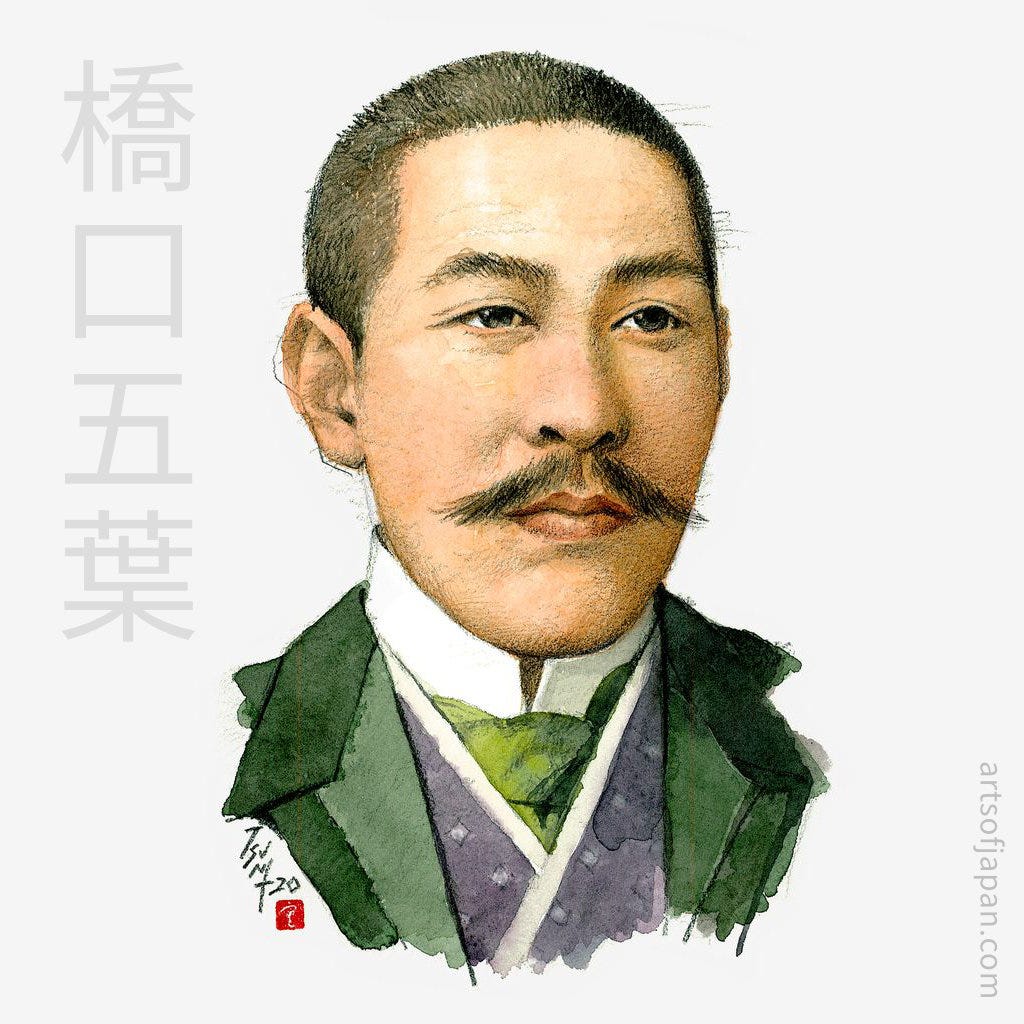
Goyō was born in 1881 (Meiji 14) as Hashiguchi Kiyoshi in Kagoshima, located on the island of Kyushu in the southern part of Japan.
He was the third son of his father, Kanemitsu, and mother, Yoshi. Goyō was one of four siblings: two older brothers and a younger sister, and they were all close to each other. His father was once an official doctor (as a Chinese herbalist) for the Shimazu family in Satsuma. However, this role lost its importance after the abolition of feudal domains and the establishment of prefectures, so he retired. The three brothers were strongly influenced by Kanemitsu, who was fond of calligraphy and enjoyed painting in the style of the Shijō school.
Education and Early Works
Growing up in a family with an affinity for the arts, Goyō began painting early on. From the age of 13, he studied under local Kanō school painter Uchiyama Jōsuken Ikkan.
In the summer of 1899, after he graduated from Kagoshima Junior High School at the age of 18, Goyō moved to Tokyo to study under Hashimoto Gahō, one of the last artists to paint in the Kanō school style.
In April 1900, he exhibited three Japanese-style paintings at the 8th Kaiga Kyōshin-kai (Society for Competitive Exhibitions of Paintings). This is believed to be the first time that he officially used his art name, “Goyō.”
However, Goyō eventually turned to Western-style painting at the recommendation of the Western-style artist Kuroda Seiki, a distant relative from Kagoshima. In September of 1900, he took a preparatory course at the Tokyo Fine Arts School, and the following year, he enrolled in the main Western painting course at the same institution.
At school, Goyō interacted with artists of the Hakuba-kai (the White Horse Society), formed by Kuroda Seiki, and exhibited three Western-style oil paintings at their exhibitions in 1902 and 1904.
Illustration
Starting in 1904, he began to contribute illustrations to the literary magazine Hototogisu, at the recommendation of novelist Natsume Sōseki, who published his writings there.
This key career opportunity was facilitated by Mitsugu, Goyō’s eldest brother, who introduced Goyō to Sōseki. Mitsugu had been a student of Sōseki when the latter was teaching English at Kumamoto Fifth High School, not far from their hometown in Kyushū.

Book Design
Teacher and disciple would later reunite when they both lived in Tokyo, occasionally meeting at Mitsugu’s house for conversations about art. Goyō, who had lived with his brother since moving to the capital, would join in. On these occasions, Sōseki would take notice of Goyō’s talents.
Sōseki, who had recently begun to serialize his first novel, Wagahai-wa neko de aru (I Am a Cat), in the Hototogisu magazine, introduced the young painter to his publisher. Notably, Goyō was 15 years younger than Sōseki and still a student at the Tokyo School of Fine Arts. Nevertheless, Goyō was commissioned as an illustrator, and his work was well received.
Sōseki must have felt that Goyō’s whimsical brushwork might be a good fit for his satirical novel, as he invited him to draw for I Am a Cat. Beginning with the October 1904 issue of Hototogisu, Goyō contributed illustrations for subsequent installments of the novel until 1906.
While the serialization was still ongoing in the magazine, the first volume of I Am a Cat was to be published in book form in 1905. Sōseki asked Goyō to design the bookbinding, sending his request by postcard: “As for the front cover, please create something from thick, eggshell-colored vellum paper with vermillion and gold…”
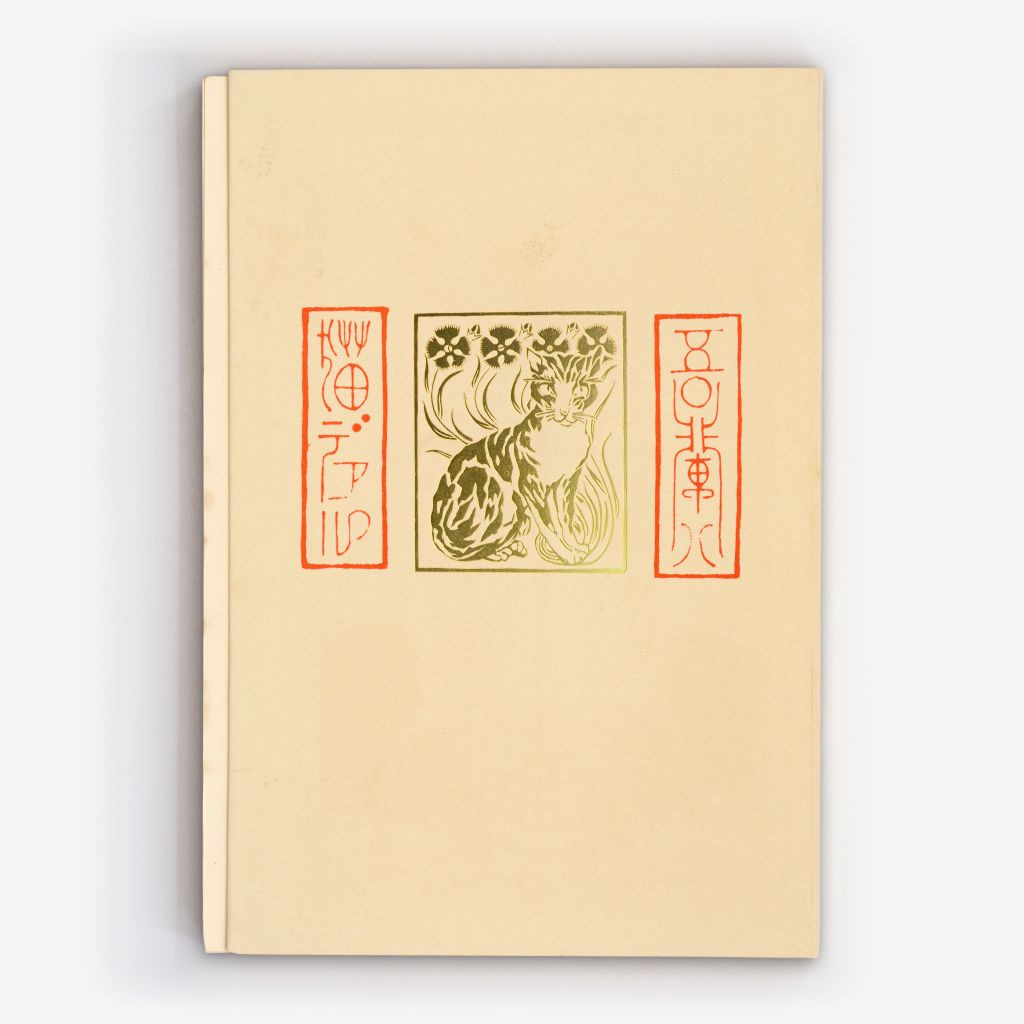
Goyō fulfilled Sōseki’s request and then some, further developing the design and bookbinding and elevating the product to a comprehensive work of visual art. The front cover featured a vermillion cat and a title with gold leaf stamping. The bookbinding was a case-bound book with a flat back and a gilt top. One side of the book was uncut, meant to be opened with a paper-knife as it was read. The result was a luxurious bound book for those days.
Following I Am a Cat, the collaboration between the two continued until 1914, ultimately totaling seventeen books.
The connection with Sōseki opened opportunities for Goyō to design books for other novelists, including Izumi Kyōka, Mori Ōgai, Nagai Kafū, Tanizaki Junichirō, Yosano Akiko, and many others. Goyō became a sought-after book designer, creating more than one hundred books during his career until 1920, the year before his death.

The most characteristic feature of Goyō’s book designs are the patterns of flowers, insects, fish, and birds, which are then framed by flowing curves or combined with other ornamentation. The influence of Art Nouveau is clear; more remarkably, he not only borrowed foreign forms but digested them until they became a natural part of his artistic expression.
Indeed, Goyō was one of Japan’s early pioneers of modern graphic design, skillfully combining Japanese and Western aesthetics and modern bookbinding techniques.
Goyō expressed his thoughts about designing books as follows:
“The most artistic aspect of binding books is apparent when a bookbinding artist is not controlled by the materials but rather expresses his artistic purpose, and when the bookbinding artist can express his taste strongly, so he should make good use of the form of bookbinding: the stitching; the relation of the front and back; the lettering, illustrations and design; and the materials, namely leather or cloth and paper, and the relation these all have to plate-making and printing.”
Selected Covers
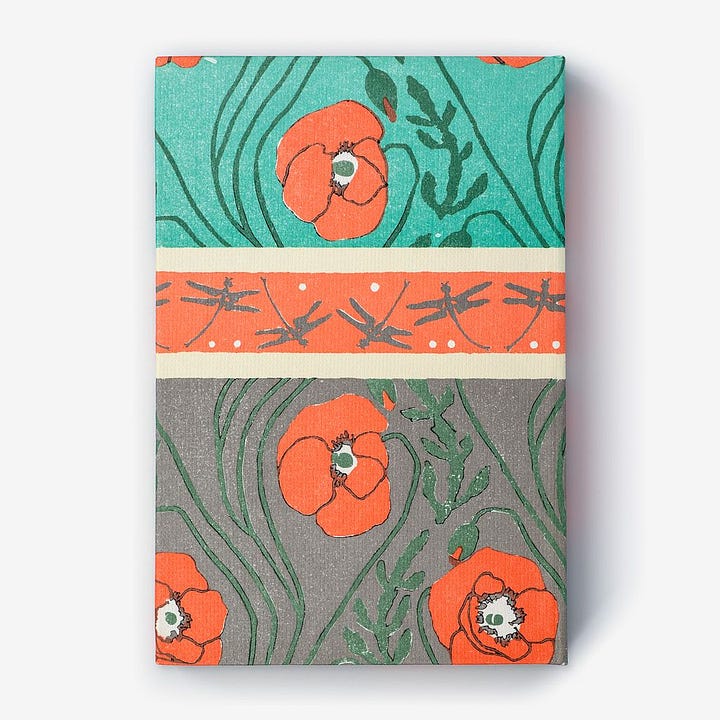
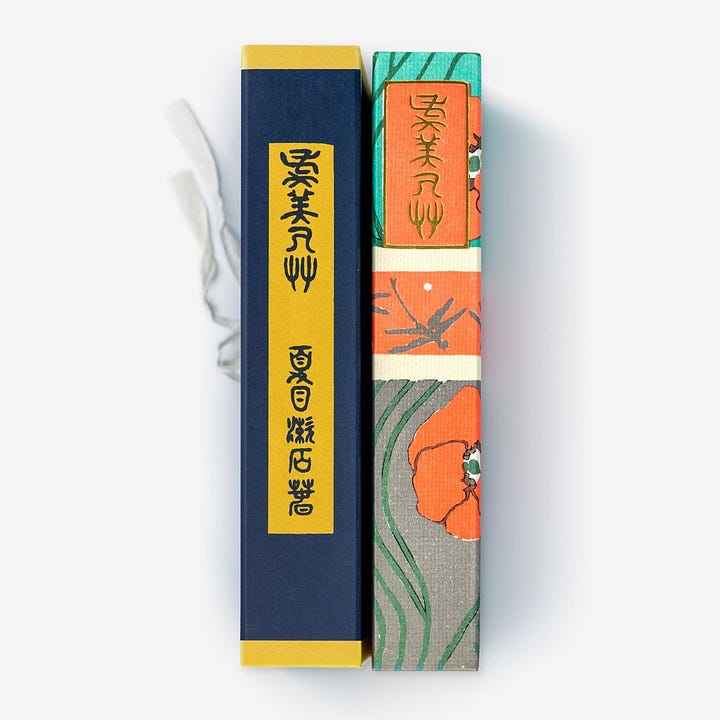

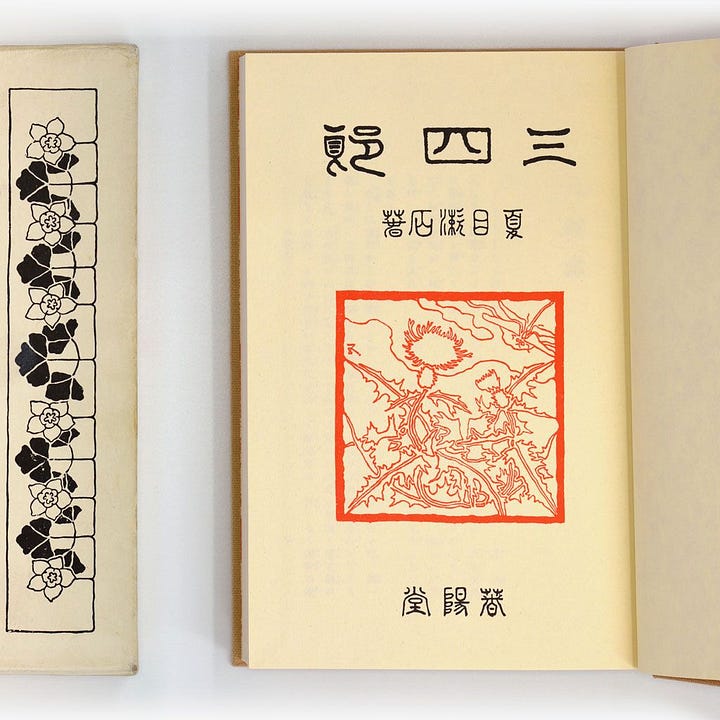


Thank your for reading the very first issue of The Arts of Japan’s Substack newsletter.
I hope you enjoyed it!
Next issue: In next week's issue, we'll look at Hashiguchi Goyo's paintings and his iconic Mitsukoshi poster.
Stefan Yanku adapted this Substack issue from an article he published on The Arts of Japan’s website. For further credits and references, please visit the original article at https://artsofjapan.com/en/profiles/hashiguchi-goyo
The books and magazines featured in this issue are from the authors' collection. The header illustration of Hashiguchi Goyo was created by Takahashi Tsunemasa for The Arts of Japan.
For copyrights and usage permissions, please refer to the statement on our website, available at https://artsofjapan.com/en/impressum.





Enjoyed this very much! It's fascinating to find out how many of the big names from Japanese literature Hashiguchi Goyō was involved with. To my shame, I tend to read their work without thinking much about what their books must have been like to see and hold. Now I know!
I love Goyo's work and regularly encounter it at the auctions where I purchase the vintage images for my collection. Thanks for writing this ❤️